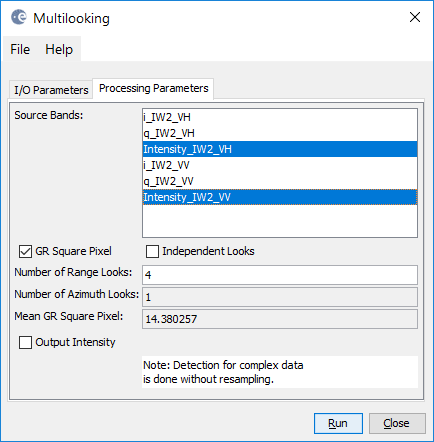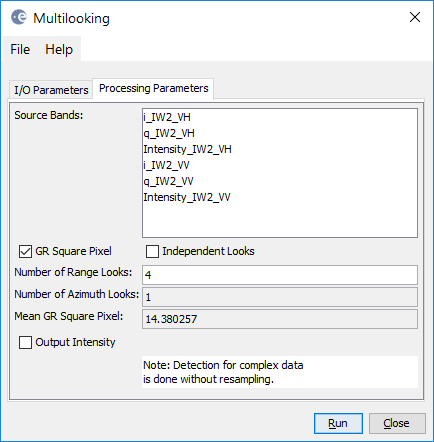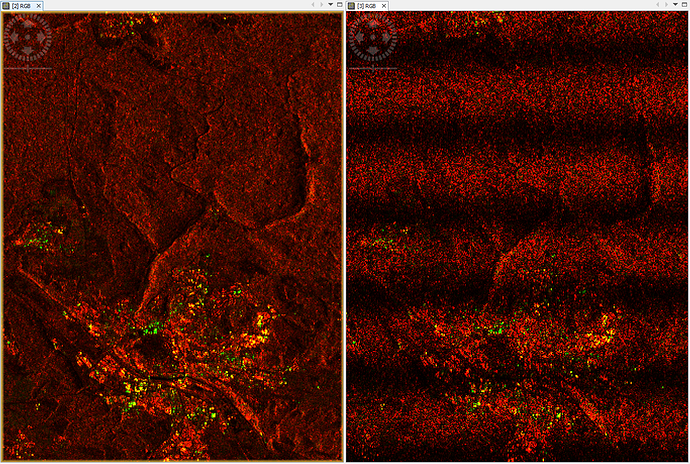you are right. The pattern should not persist in the multi-looked image.
I found that the difference is the selection of input bands:
Left: Intensity was selected (see below), right: no input band was selected.
Selection for the left image:

Only intensity bands remain in the product.
Selection for the right image:

Intensity and i+q remain in the product.
